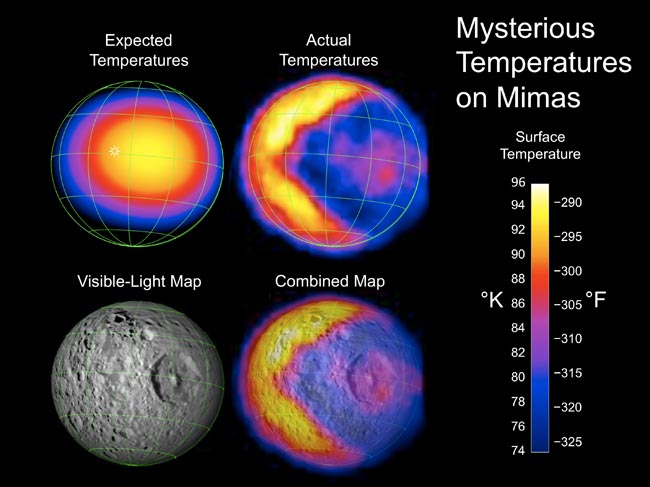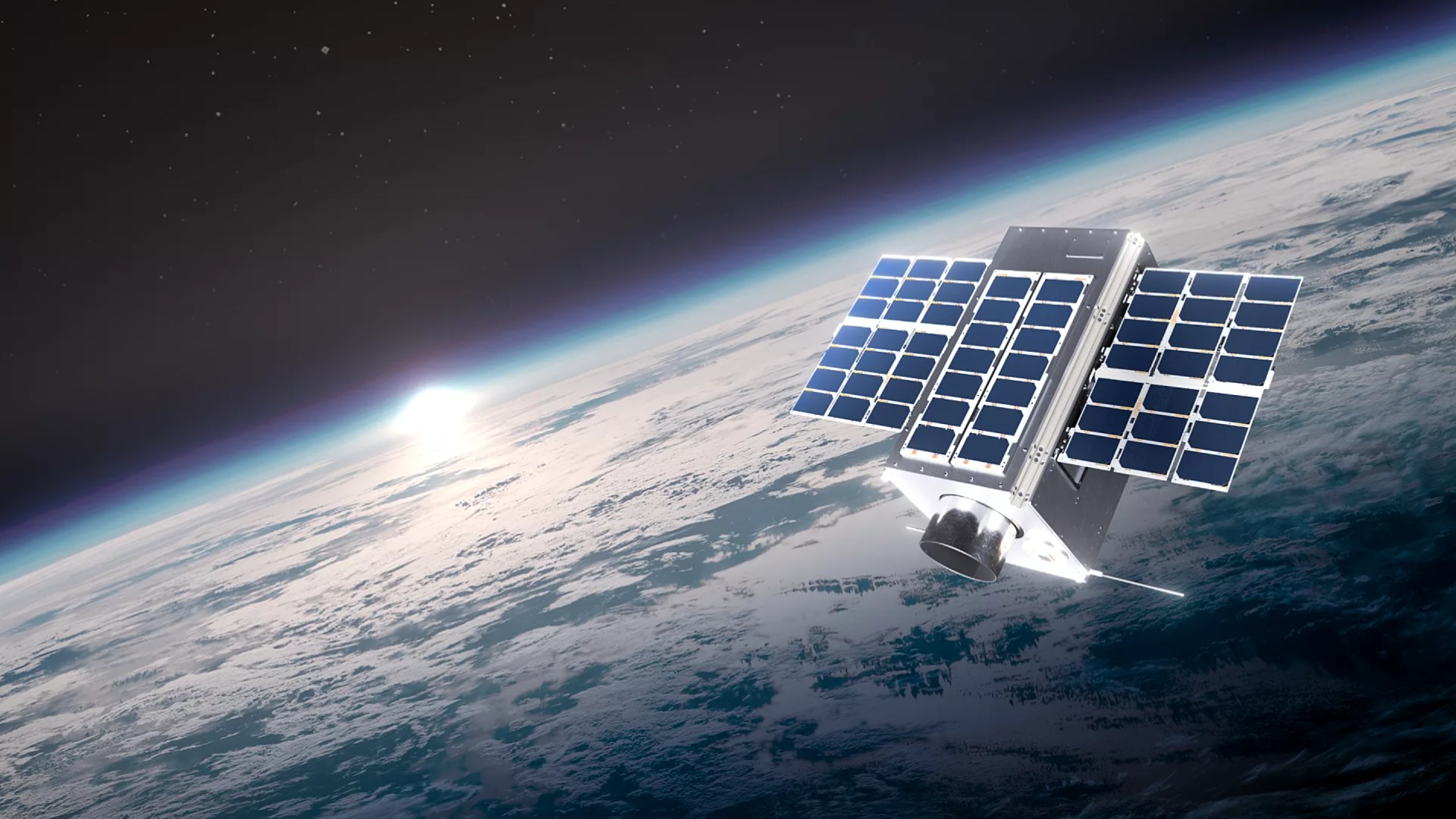Saturn Moon's Heat Glow Looks Just Like Pac-Man

As if dominating one 1980s pop icon wasn?t enough, Saturn?smoon Mimas ? which bears a striking resemblance to the Death Star in "StarWars" ? has a heat glow that looks like Pac-Man chomping down on somevideo game chow.
New high-resolution images and a temperature map of Mimas takenby NASA's Cassini spacecraft revealed the surprising patterns on the surface ofthe small moon. The odd Pac-Man-like feature, along with striking bands of light and dark incrater walls, were seen by during its closest flyby of the moon on Feb. 13.
The new photos also take a lookat the moon?s enormous scar, called Herschel Crater, and has often been said togive Mimasa Death Star look.
"Other moons usually grab the spotlight, but it turnsout Mimas is more bizarre than we thought it was," said Linda Spilker, Cassiniproject scientist at NASA's Jet Propulsion Laboratory in Pasadena, Calif."It has certainly given us some new puzzles."
Scientists working with Cassini's composite infrared spectrometer,which mapped Mimas's temperatures, expected to see smoothly varyingtemperatures peaking in the early afternoon near the equator. Instead, thewarmest region was in the morning, along one edge of the moon?s disk, making asharply defined Pac-Man shape, with temperatures around minus 294 degreesFahrenheit (minus 181 Celsius).
The rest of the moon was much colder, around minus 320degrees Fahrenheit (minus 196 Celsius). A smaller warm spot ? the dot inPac-Man's mouth ? showed up around Herschel, with a temperature around minus310 degrees Fahrenheit (minus 190 Celsius).
The warm spot around Herschel makes sense because tallcrater walls (about 3 miles, or 5 kilometers, high) can trap heat inside thecrater. But scientists were completely baffled by the sharp, V-shaped,Pac-Man-like pattern.
Breaking space news, the latest updates on rocket launches, skywatching events and more!
"We suspect the temperatures are revealing differencesin texture on the surface," said John Spencer, a Cassini compositeinfrared spectrometer team member based at Southwest Research Institute inBoulder, Colo. "It's maybe something like the difference between old,dense snow and freshly fallen powder."
Denser ice quickly conducts the heat of the Sun away fromthe surface, keeping it cold during the day. Powdery ice is more insulating andtraps the Sun's heat at the surface, so the surface warms up.
Even if surface texture variations are to blame, scientistsare still trying to figure out why there are such sharp boundaries between theregions, Spencer said.
It is possible that the impact that created Herschel Cratermelted surface ice and spread water across the moon. That liquid may haveflash-frozen into a hard surface. But it is hard to understand why this densetop layer would remain intact when meteorites and other space debris shouldhave pulverized it by now, Spencer said.
Icy spray from the E ring, one of Saturn'souter rings, should also keep Mimas relatively light-colored, but the newvisible-light images from the flyby paint a picture of surprising contrasts. Cassiniimaging team scientists didn?t expect to see dark streaks trailing down thebright crater walls or a continuous, narrow pile of concentrated dark debristracing the foot of each wall.
The pattern may appear because of the way the surface ofMimas ages, said Paul Helfenstein, a Cassini imaging team associate based atCornell University in Ithaca, N.Y. Over time, the moon?s surface appears toaccumulate a thin veil of silicate minerals or carbon-rich particles, possiblybecause of meteor dust falling onto the moon, or impurities already embedded insurface ice.
As the Sun's warming rays and the vacuum of space evaporatethe brighter ice, the darker material is concentrated and left behind. Gravitypulls the dark material down the crater walls, exposing fresh ice underneath.
Although similar effects are seen on other moonsof Saturn, the visibility of these contrasts on a moon continually re-pavedwith small particles from the E ring helps scientists estimate rates of changeon other satellites.
"These processes are not unique to Mimas, but the newhigh-definition images are like Rosetta stones for interpreting them," Helfensteinsaid.
- Images:The Rings and Moons of Saturn
- VoteNow! Cassini's Greatest Hits: Images of Saturn
- Top10 Extreme Planet Facts

Space.com is the premier source of space exploration, innovation and astronomy news, chronicling (and celebrating) humanity's ongoing expansion across the final frontier. Originally founded in 1999, Space.com is, and always has been, the passion of writers and editors who are space fans and also trained journalists. Our current news team consists of Editor-in-Chief Tariq Malik; Editor Hanneke Weitering, Senior Space Writer Mike Wall; Senior Writer Meghan Bartels; Senior Writer Chelsea Gohd, Senior Writer Tereza Pultarova and Staff Writer Alexander Cox, focusing on e-commerce. Senior Producer Steve Spaleta oversees our space videos, with Diana Whitcroft as our Social Media Editor.
